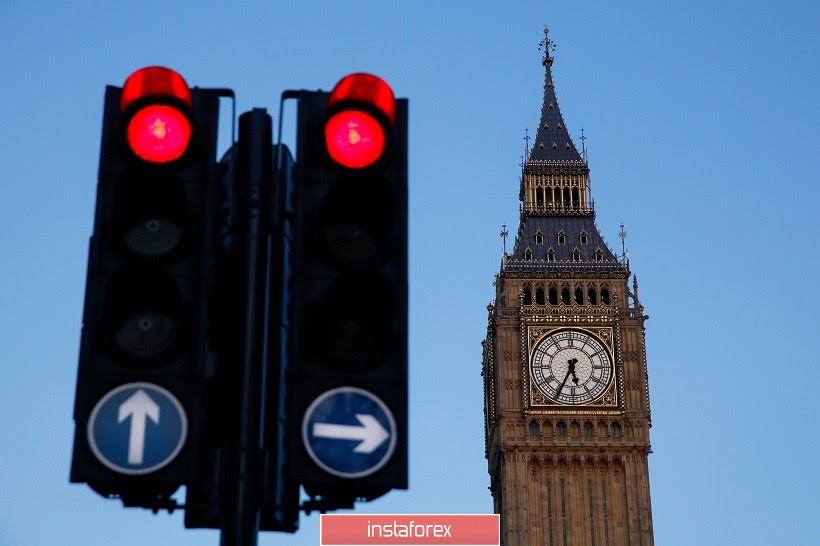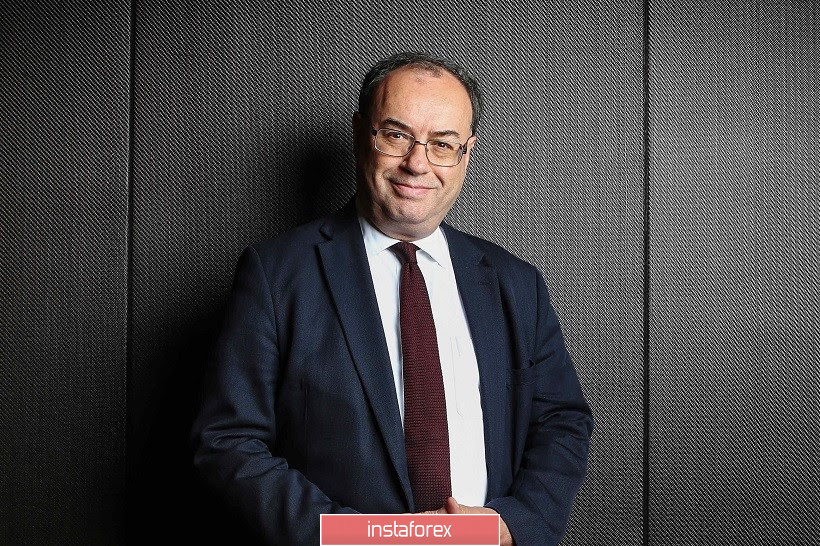The pound-dollar pair has recently shown increased volatility, but it cannot determine the direction of movement in the medium term. For example, the GBP pair fluctuated within the 100-point range yesterday and the day before yesterday, then falling to the bottom of the 30th figure, then rising to the borders of the 31st price level. Today, buyers were able to overcome the 1.3100 mark again and even rose to the middle of the 31st figure. Intraday price growth looks confident and "peremptory " – such an impulse price dynamics, as a rule, encourages many traders to open trading orders. And if we consider the short-term time period (within the framework of today), then longs are really a priority. But if we talk about the medium-term period, the prospects for the pound look less transparent.
The fact is that today's growth is only due to the US dollar's weakness, while the British currency will also come into play tomorrow: the pound will have to survive the so-called "Super Thursday". Let me remind you that the results of the August Bank of England meeting will be announced tomorrow, secondly, a report on monetary policy will be released; and thirdly, BoE governor Andrew Bailey will hold a press conference. Traders will focus their attention on all of these events, especially if the members of the central bank touch on the most painful topic for investors - negative rates.

For the first time, rumors that the Bank of England may introduce a negative rate appeared in early May, when macroeconomic indicators first reflected the scale of the economic disaster. At first, these conversations seemed to be just conversations - after all, Bailey himself had previously rejected this idea. But that was back in March, when Britain only "got acquainted" with the coronavirus. And when COVID-19 actually closed the country for a month and a half, Bailey's position changed dramatically. Speaking to members of the British Lower House of Parliament, he said that the central bank "is actively considering the option of reducing the rate to zero."
Since then, the issue of introducing a negative rate has been constantly looming on the horizon, fulfilling a peculiar role of the Sword of Damocles, which hovered over the heads of GBP/USD buyers. After the weakening of quarantine measures and the appearance of the first signs of recovery processes, this topic was forgotten. But recent events suggest that Committee members could raise this issue again at tomorrow's meeting - and some of them may even vote for a rate cut. In this case, the pound will be under rather strong pressure, and along with the dollar, at least it will retreat to the bottom of the 30th figure. According to a number of experts (in particular, currency strategists at Scotiabank, which is the third largest bank in Canada), there are certain prerequisites for the implementation of this scenario, given the situation with the coronavirus in the country.
Let me remind you that the latest macroeconomic data reflected the recovery of key macroeconomic indicators. The monthly consumer price index rose above zero for the first time since March, ending up at +0.1%. In annual terms, inflation also showed positive dynamics, rising to 0.6%. Core inflation also increased: the main consumer price index exceeded the forecast values and reached 1.4%. The labor market also pleased market participants: the unemployment rate fell to 3.9%, and the average wage rose to 0.7% (excluding bonuses).
It would seem that against the background of such rosy reporting, buyers of GBP/USD have nothing to worry about. But the catch is that the British data are released with a long delay: for example, the latest data on inflation were published in June, and on the labor market – in May. By the way, it was in May that Britain began to gradually relax the quarantine restrictions, which explains the decrease in unemployment – people began to return to their jobs. The quarantine almost completely disappeared in June, and, accordingly, British consumer activity increased. The flywheel of economic activity began to unwind, positively affecting the dynamics of the main macro indicators.
But, as you know, the situation with the coronavirus in the UK has deteriorated at the end of July: 846 new cases of infection were registered in the country (this is the highest increase in a month). Against the backdrop of such trends, British Prime Minister Boris Johnson said that he would postpone the next phase of quarantine easing for at least two weeks. Quarantine measures were tightened for many regions of the country at the beginning of this month: new strict restrictive measures affected the entire county of Greater Manchester, parts of Lancashire and West Yorkshire. According to experts, the second wave of the pandemic could be twice as bad in consequence as the initial outbreak in the UK.

Given these trends, we can assume that forecasts will be updated at tomorrow's BoE meeting, reflecting the prevalence of downside risks. It is also possible that Bailey will mention negative interest rates at his press conference. Even if this topic is discussed in a hypothetical context, the pound will still be under pressure.
Thus, tomorrow's so-called "Super Thursday" is able to bring the GBP/USD pair back to the bottom of the 30th figure. The BoE has few reasons for optimism, but there are plenty of reasons for concern. Therefore, in the medium term, you are advised to make trading decisions on the pair after Bailey's press conference (it will take place three hours after results of the August meeting are announced). In this case, one should not rely only on further weakening of the dollar, since the topic of negative rates is too painful for GBP/USD traders.
 English
English 
 Русский
Русский Bahasa Indonesia
Bahasa Indonesia Bahasa Malay
Bahasa Malay ไทย
ไทย Español
Español Deutsch
Deutsch Български
Български Français
Français Tiếng Việt
Tiếng Việt 中文
中文 বাংলা
বাংলা हिन्दी
हिन्दी Čeština
Čeština Українська
Українська Română
Română

